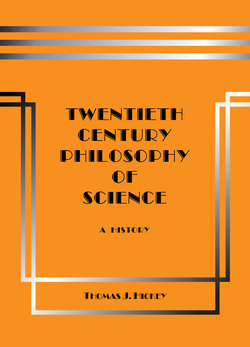Читать книгу Twentieth-Century Philosophy of Science: A History (Third Edition) - Thomas J. Hickey - Страница 75
На сайте Литреса книга снята с продажи.
3.44 Pragmatic Definition of Test-Design Language
ОглавлениеPragmatically theory is universally quantified language that is proposed for testing, and test-design language is universally quantified language that is presumed for testing.
Accepting or rejecting the hypothesis that there are red ravens presumes a prior agreement about the semantics needed to identify a bird’s species. The test-design language defines the semantics that identifies the subject of the tested theory and the procedures for executing the test design. This semantics includes but is not limited to the language for describing the design of any test apparatus, the testing methods including any measurement procedures, and the characterization of the test’s initial conditions. The semantics for the independent characterization of the observed outcome resulting from the test execution is also defined in the test design language. The universally quantified test-design statements contribute these meaning components to the semantics of the descriptive terms common to both the test design and the theory.
Both theory and test-design language are believed to be true, but for different reasons. Experimenters testing a theory presume the test-design language is true with definitional force for identifying the subject of the test and for describing the procedures for executing the test. The advocates proposing or supporting a theory believe the theory statements are true with sufficient plausibility to warrant the time, effort and cost of testing with an expected nonfalsifying outcome. For these advocates both the theory statements and the test-design statements contribute component parts to the complex semantics of the descriptive terms that the theory and test-design statements share prior to testing.
Often test-design concepts describing the subject of a theory are either not yet formulated or are too vaguely described and conceptualized to be used for effective testing. They are concepts that await future scientific and technological developments that will enable formulation of an executable and decisive empirical test. Formulating a test design capable of evaluating decisively the empirical merits of a theory often requires considerable ingenuity. Eventual formulation of specific test-design language enabling an empirical decision supplies the additional clarifying semantics that sufficiently reduces the disabling empirical underdetermination in the descriptive terms of the theory.
